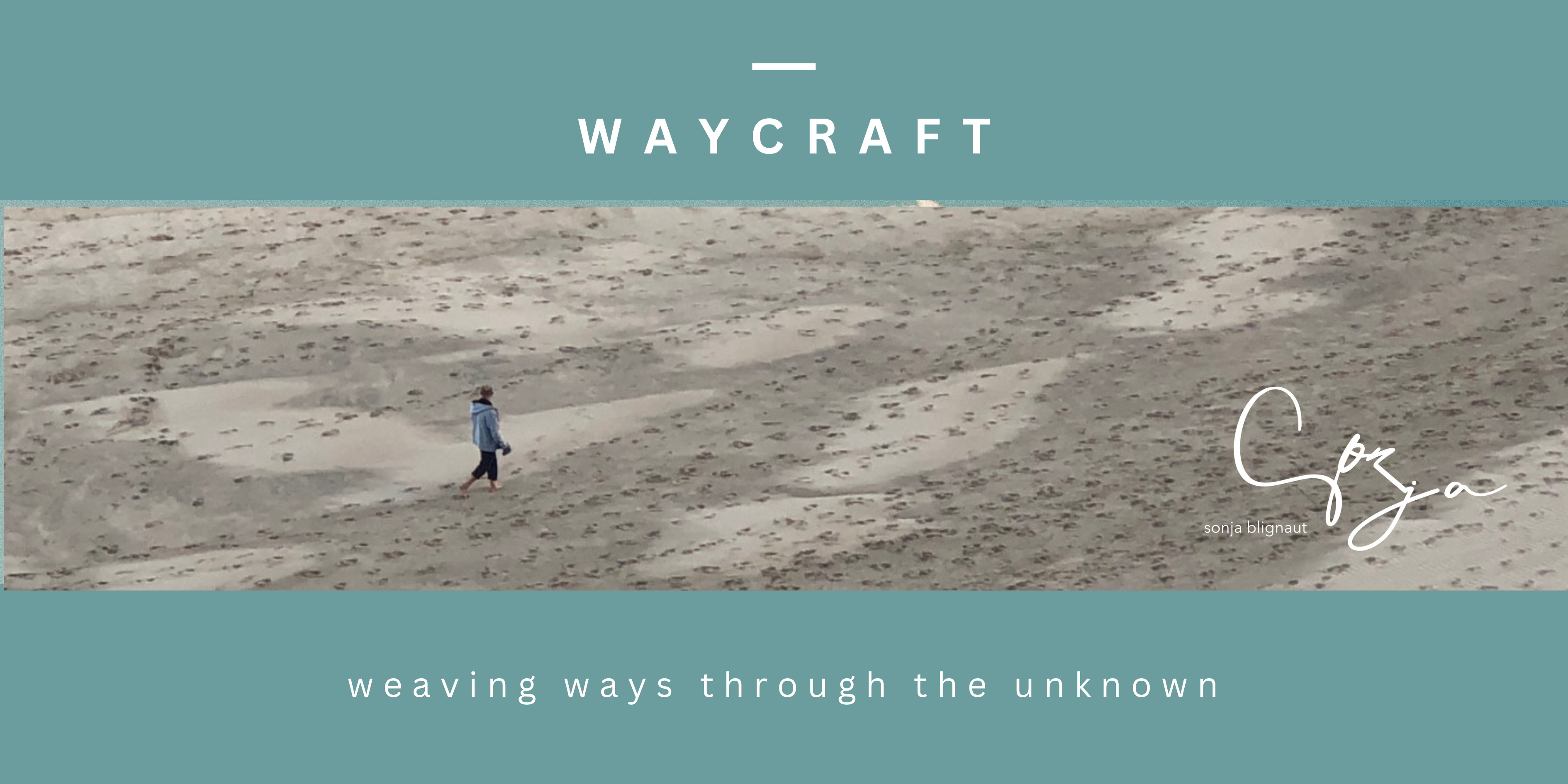We are living in a time when many of our inherited ways no longer serve.
We were taught to fix, to plan, to predict.
To measure twice, cut once, and follow the map.
To choose a career, stick to a path, and optimise the system.
But what happens when the path disappears?
When the map runs out, and the systems around us feel too rigid, extractive, or soul-dulling to hold the complexity of what we’re facing or the fullness of who we are?
For years, I’ve worked with complexity in organisational contexts.
I’ve helped leaders make sense of uncertainty, emergence, and change.
I’ve created frameworks and taught complexity thinking.
But in recent years, life itself became my greatest teacher.
Through grief, joy, transition, and profound reorientation, I began to see complexity not as a problem to solve, but as a living field to walk with.
Something to attune to.
Something to remember how to navigate.
Words are spells
There are many words describing how we move through the world:
Wayfinding. Waymaking. Wayfaring. Wayshaping. Wayshowing.
Each evokes something slightly different; none quite captures what is needed.
Because life unfolds in movement: in finding ways to be in relationship, to heal, to navigate change, to meaningful work.
Some paths are straight.
Others meander.
Some pivot.
Some spiral.
Humaning (to steal a verb from Tim Ingold) is moving.
Words are spells, and so I am playing with new words. Words that can reshape our relationship with how we move through life.
Wayweaving: Weaving with ways past, present and future. Sometimes finding, sometimes making, sometimes shaping, sometimes showing.
Waying: a verb, a rhythm, a practice of staying in relationship with the unknown. Waying is the way.
Waycraft: the container for all the ways we weave with ways … the craft of “walking-with” the unknown.
Why “Craft”?
The word craft comes from Old English cræft: meaning not just skill, but strength, power, even virtue.
It’s a word that speaks to something lived and relational.
Something shaped by devotion, by practice, by contact with life.
Unlike strategy or doctrine, craft resists abstraction.
Waycraft doesn’t mean we plan or design ways like a woodworker might design a chair.
It’s not a method for controlling complexity.
The “craft” here is subtler.
It lives in the wrist, in the pause, in the space between sensing and stepping.
It’s the kind of craft that comes from being in relationship: with uncertainty, with timing, with place, with others.
It invites devotion.
Waycraft is not a formula.
It’s not about finding the way or claiming a way.
It’s about tending our capacity for wayweaving and waying: in plural, emergent, ancient, and alive ways.
It is a liminal practice.
Always in the in-between.
Weaving together wisdom from the ancients, the mystics and emerging science.
It holds polarities … masculine and feminine, individual and collective, person and system.
It’s about learning how to walk, feel, and respond in real time…
with awareness, with others, and with the more-than-human world.
Some aspects of Waycraft feel like archaeology:
Unearthing wisdom buried under modernity.
Listening to the songs our ancestors knew how to hear.
Honouring the relational intelligence of the ancient paths.
Others feel like scouting:
Finding ways into and through new frontiers where no compass helps.
Where we are guided, not by certainty, but by attention, attunement, and resonance.
Like infant fish orienting to the sound of a coral reef,
we too have subtle senses for waying.
We tune. We sense. We remember. We weave ways, together.
A constellation of practices and frameworks.
I work with a constellation of practices and frameworks that support this kind of movement. Some of these are …
COOL: Courage, Openness, Observing, and Lightness—as a posture for the unknown.
STAR: Sense, Tune In, Awareness, and Respond—as a rhythm of attunement.
And the WaysFinder—a scaffold and compass for orienting when no map will do.
But Waycraft is more than any of these.
It is not a model to teach. It is a stance, a song, a way of relating.
It is something we do, and something that does us, over time.
This Substack is my hearth for sharing what I’m learning.
Sometimes through frameworks and concepts.
Sometimes through story, image, or poetry.
I’m not here to define the way.
I’m here to invite you into your own relationship with waying.
To remember that even when the path disappears,
there is still a rhythm,
a resonance,
a way through.
If you feel your old maps fading…
If you’re tired of performative certainty…
If you’re longing for resonance, relationship, and rhythm…
Welcome to Waycraft.
Let’s practice waying. Together.
Note: If you’re enjoying Waycraft, one of the best ways to support it is by recommending it to your readers or friends. Quiet resonance grows stronger when shared.





Your opening line so captures the essence of what makes this third stage of life so interesting. As you so aptly write -- we are living in a time when our inherited ways no longer serve. So good!
This is deeply meaningful and thoughtful wordsmithing. I look forward to learning more about your frameworks and the art of waycrafting as a path forward.